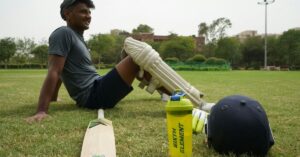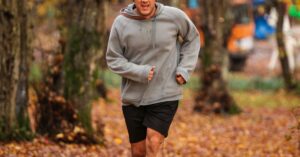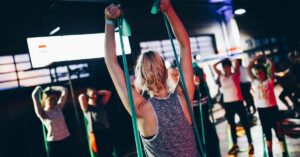Revolutionize Your Recovery: Essential Mobility Techniques Every Athlete Should Know

Revolutionize Your Recovery: Essential Mobility Techniques Every Athlete Should Know
Recovery—an often overlooked yet crucial aspect of athletic performance. While many athletes focus intensely on strength training, endurance, or skill development, the process of recovery frequently gets relegated to an afterthought. But what if I told you that effective recovery could be the secret sauce propelling you to the next level? Yes, it’s true! Understanding and implementing essential mobility techniques can not only enhance your recovery but also improve your overall athletic performance. So, let’s dive into the world of mobility, shall we?
The Importance of Mobility
Mobility is more than just a fitness buzzword; it’s the foundation of a healthy, functional body. Simply put, mobility refers to the ability of your joints to move freely through their full range of motion. Think of it as the oil in the machinery—without it, things start to grind, creak, and eventually break down. For athletes, maintaining good mobility is vital for preventing injuries, enhancing performance, and speeding up recovery.
Many of us probably have that one friend (you know the type) who thinks they can skip mobility work because they’re young and strong. But trust me, I’ve seen them bend like a pretzel one minute and then hobble like a grandparent the next after a heavy workout. It’s a hard lesson learned, but mobility isn’t just for the seasoned veterans. It’s for everyone, no matter the sport or age.
Foundational Mobility Techniques
Now, let’s talk about some essential mobility techniques that every athlete should incorporate into their routine. These techniques can be easily integrated into your warm-up, cool-down, or as standalone sessions. Consider this your toolkit for better recovery!
Dynamic Stretching
Dynamic stretching is a fantastic way to prime your muscles and joints for action. Unlike static stretching, which involves holding a position for an extended period, dynamic stretching focuses on controlled movements that increase blood flow and improve range of motion. It’s like warming up a car before hitting the road—necessary to ensure everything runs smoothly.
Here are a few dynamic stretches to consider:
- Leg Swings: Stand next to a wall and swing one leg forward and backward. This helps loosen up the hip flexors and hamstrings.
- Arm Circles: Extend your arms and make small circles, gradually increasing the size. It’s great for warming up the shoulders.
- Walking Lunges: Step forward into a lunge, alternating legs. This not only stretches the hip flexors but also engages your core.
When I first started incorporating dynamic stretching, I felt like a toddler learning to walk—awkward but necessary. Eventually, it became second nature, and I noticed a significant difference in my performance.
Foam Rolling
If dynamic stretching is the warm-up, then foam rolling is the cool, soothing balm that follows a tough workout. Foam rolling is a form of self-myofascial release that helps alleviate muscle tightness and improve blood flow. Think of it as giving yourself a mini-massage, minus the awkward small talk with a stranger.
To get started with foam rolling, try these key areas:
- Quads: Position the foam roller under your thighs and roll from your hips to your knees. Ouch, but oh-so-good!
- IT Band: Lie on your side, placing the roller under your outer thigh. It’s a bit painful, but worth it for those of us who run or cycle.
- Upper Back: Lean against the roller while lying on the floor and roll it up and down your spine. Your back will thank you!
A word of caution: Don’t go too hard too fast! Remember, the goal is to relieve tension, not to inflict pain (unless you’re into that sort of thing, and who am I to judge?).
Static Stretching
After you’ve completed your workout or foam rolling session, static stretching can be your best friend. This involves holding stretches for a prolonged period (typically 15 to 60 seconds) to improve flexibility and range of motion. It’s like letting the muscles bask in a warm, cozy blanket after a chilly day.
Some effective static stretches include:
- Hamstring Stretch: Sit with one leg extended and reach toward your toes. It’s a classic!
- Butterfly Stretch: Sit with the soles of your feet together and gently press your knees down. It’s great for opening up the hips.
- Shoulder Stretch: Bring one arm across your body and gently pull it closer with the opposite arm. Say goodbye to shoulder tightness!
I remember the days when I’d skip static stretching, thinking I was invincible. Spoiler alert: I wasn’t. Taking the time to stretch statically post-workout has made a world of difference.
Advanced Mobility Techniques
Once you’ve mastered the basics, it’s time to step it up a notch. Here are some advanced mobility techniques that can take your recovery to the next level.
Joint Mobilizations
Joint mobilizations involve specific movements aimed at improving the range of motion of a joint. This technique can be highly beneficial for athletes who may have developed restrictions due to repetitive movements in their sport. Think of it as giving your joints a little TLC.
For example, ankle dorsiflexion mobilization can help improve your squat depth or running mechanics. To perform this, place your foot against a wall and lean forward while keeping your heel down. You should feel a gentle stretch in your calf and ankle.
Another great one is hip mobilization. Start in a quadruped position (on all fours), then shift your weight back towards your heels while keeping your hands on the ground. Alternate between shifting left and right. It’s a simple motion that does wonders for hip mobility.
Active Isolated Stretching (AIS)
Active Isolated Stretching is a technique that involves holding a stretch for only two seconds and then releasing it, repeating several times. The idea is that by using your own muscles to hold a position, you’re training your body to improve flexibility without overstretching, which can lead to injury. It’s like a dance party for your muscles—quick bursts of energy followed by a well-deserved break.
For AIS, try the following:
- Hip Flexor Stretch: Stand in a lunge position and gently push your hips forward while holding for two seconds. Repeat several times.
- Calf Stretch: Stand on a step with your heels hanging off the edge. Lower your heels down for two seconds, then rise back up. It builds strength and flexibility.
When I was first introduced to AIS, it felt a bit odd at first, but after a few sessions, I noticed my flexibility improving dramatically. Plus, it was a great conversation starter at the gym!
Integrating Mobility Techniques into Your Routine
So, now that you have an arsenal of mobility techniques, how do you integrate them into your routine? It’s easier than you might think. Consider the following strategies:
Warm-Up Routine
Start each workout with a dynamic warm-up that incorporates mobility exercises. Think of it as your pre-game show—get your body ready for the main event! A good warm-up might include 5-10 minutes of dynamic stretching and joint mobilizations, setting the stage for optimal performance.
Post-Workout Cool Down
After your workout, dedicate 10-15 minutes to static stretching and foam rolling. This recovery period is essential for reducing muscle soreness and improving flexibility. It’s like hitting the “refresh” button on your body.
Dedicated Mobility Sessions
Consider adding dedicated mobility sessions to your weekly routine. This could be a 20-30 minute session focused solely on mobility work, ideally on rest days or lighter training days. Your body will thank you for it.
The Mental Aspect of Recovery
Recovery isn’t just physical; it’s mental too. Athletes often face the pressure of performance, and it can be easy to forget the importance of mental recovery. Incorporating mindfulness practices or meditation can help you stay focused and calm, allowing you to approach your training with a clear mind.
For example, I’ve found that taking just five minutes to breathe deeply and reflect on my goals can set a positive tone for my training. It’s a small investment of time with significant returns!
Real-Life Success Stories
To put the spotlight on the effectiveness of these mobility techniques, let’s take a moment to explore some inspiring real-life examples.
The Runner’s Transformation
Take Jenna, a dedicated marathon runner who struggled with chronic hip pain. After months of frustration, she sought advice from a physical therapist who introduced her to mobility techniques. By integrating dynamic stretching and joint mobilizations into her routine, Jenna gradually improved her hip mobility. Within weeks, she was running pain-free and even set a new personal best in her next marathon. Talk about a success story!
The Weightlifter’s Comeback
Then there’s Mike, a weightlifter who faced frequent shoulder injuries. Determined not to let this derail his progress, he committed to a regimen of active isolated stretching and foam rolling focused on his upper body. Not only did his shoulder pain diminish, but his lifts improved as well. Mike often jokes that he’s now “the king of the foam roller!”
Final Thoughts: Embrace the Mobility Revolution
Incorporating mobility techniques into your recovery routine can revolutionize not just how you feel post-workout but also how you perform in your sport. It’s a multifaceted approach that addresses both physical and mental aspects of training. Remember, every athlete is different, so find what works best for you.
So, whether you’re a weekend warrior or a seasoned pro, don’t underestimate the power of mobility. Embrace these techniques, and you might just find yourself feeling better, performing better, and enjoying your sport more than ever before. Who knew recovery could be this exciting? Happy stretching!
And hey, if you ever find yourself at the gym and come across a foam roller, give it a little smile—it might just become your new best friend.






